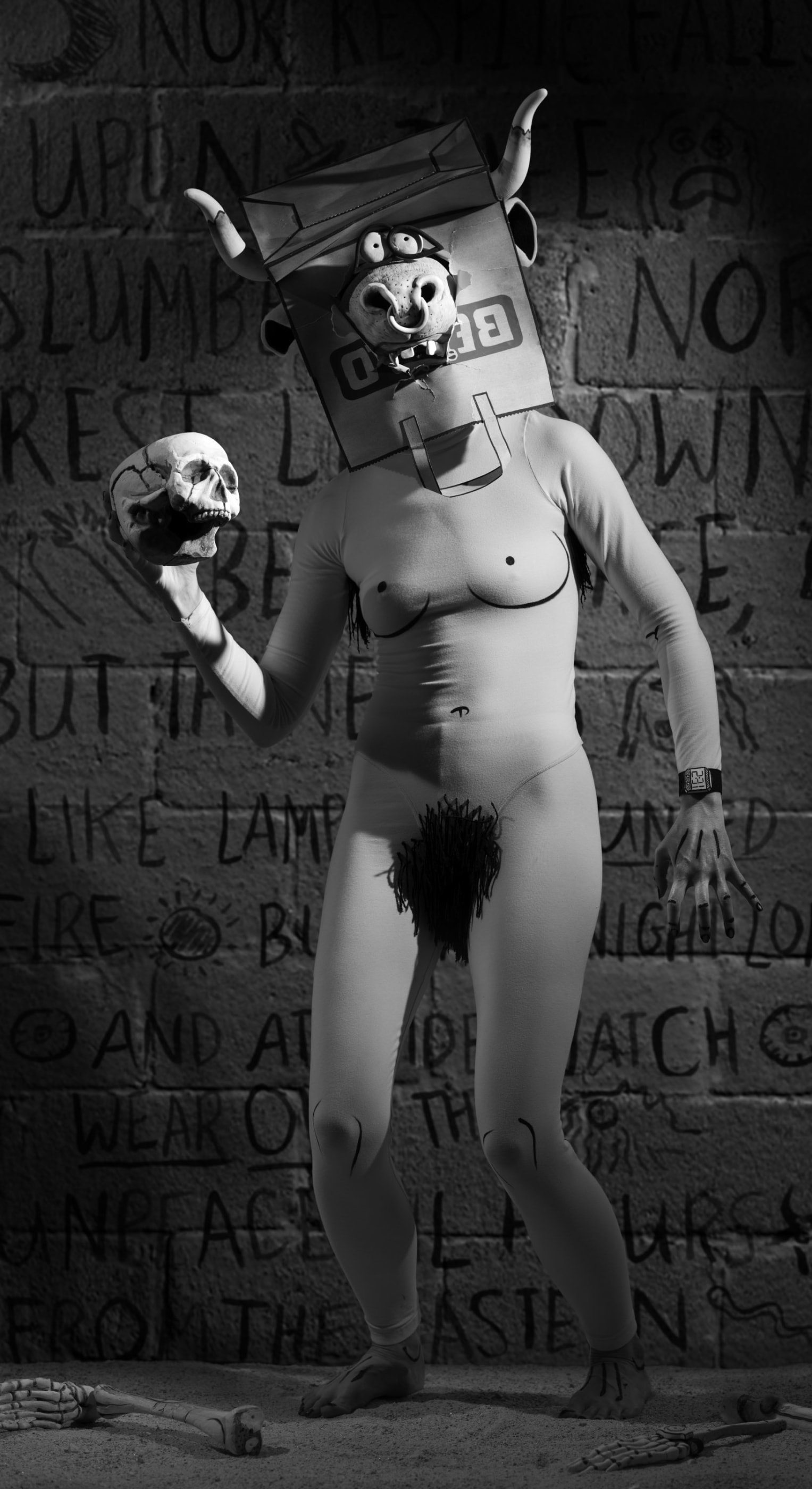Overview
Pilar Corrias is pleased to present Swinburne's Pasiphae, the second solo exhibition by American artist Mary Reid Kelley with the gallery, featuring a new film alongside props, drawings, and photographic portraits.
Swinburne's Pasiphae (2014) follows Priapus Agonistes (2013) in an ongoing trilogy that explores the mythological Minotaur's tragic family tree. For the first time Reid Kelley adapts an existing text, using Victorian poet Algernon Charles Swinburne's dramatic fragment Pasiphae to tell the unlikely story of the Minotaur's conception. Unpublished during Swinburne's lifetime, probably due to its shocking sexual theme, the poem stages an interaction between master artisan Daedalus and the Minotaur's mother, the bewitched Minoan Queen Pasiphae, who is cursed with an insatiable wish to mate with a beautiful bull. Symbolising, respectively, reckless creative power and the torment of unfulfilled desire, Daedalus and Pasiphae indelibly dramatise the complex collaboration of artist and audience.
Mary Reid Kelley works primarily in video. Captivated by the portrayal of women throughout history, her films glean stories from significant historical periods, especially moments of cataclysm. Her early suite of films take inspiration from female archetypes of the World War I era, whose stories were largely unrecorded, namely a nurse from the Western Front (The Queen's English, 2008), a munitions worker (Sadie, the Saddest Sadist, 2009), and a prostitute from the frontline (You Make me Iliad, 2010).These films explore how conventions of law, politics, and philosophy have all impacted on the lives of women.
Like the puns and wordplay that fill Reid Kelley's original scripts, the revival of mythological characters involves a fundamental repetition, and the collaboration of authors and speakers over time. Here, in Swinburne's Pasiphae, Reid Kelley pivots from an analysis of gendered history to gendered mythology. The stylised characters in her films function as embodied poetic ideas, conceptual sites that accrue meaning and symbolic dimension with each new usage.
Reid Kelley's original, meticulously composed scripts contest conventions of written language and spoken word, veering between comic and tragic interpretation. Often parodically borrowing structure from Alexander Pope's heroic couplets or the anapestic meter of Lewis Carroll, the films' fractured narratives reflect their characters' deluded, perilous states. Her characters' monologues are tactile and rich in linguistic effect - full of puns, homophones, wordplay, clichés - enriched further by her weighted vocal expression. Reid Kelley casts herself as the protagonist, made unrecognisable through a distinctive monochromatic palette, wigs and heavy make-up. Made in collaboration with her husband, artist Patrick Kelley, her films are constructed through a combination of live-action performance; costumes, props and set design; drawing; graphic animation; and printed word.
Mary Reid Kelley (b. 1979 in Greenville, South Carolina USA) lives and works in Olivebridge, upstate New York. Reid Kelley received her BFA from St. Olaf College, Minnesota, and an MFA in Painting from Yale University in 2009. Last year the Institute of Contemporary Art/Boston held the first solo museum exhibition of Reid Kelley's work. Recent solo exhibitions include: Mary Reid Kelley: Working Objects and Videos, Samuel Dorsky Museum of Art, New Paltz; University Art Museum, University at Albany, New York (2014); Sadie, The Saddest Sadist and Priapus Agonistes, Yale University Art Gallery, New Haven (2013); The Syphilis of Sisyphus: Mary Reid Kelley with Patrick Kelley, AMOA Arthouse, Austin (2013); The Syphilis of Sisyphus, The Box at Wexner Center for the Arts, Columbus. Recent group exhibitions include: Mary Reid Kelley and Maria Lassnig, Rose Art Museum, Massachusetts (2014); Through the Eyes of Texas: Masterworks from the Alumni Collections, Blanton Museum of Art, University of Texas, Austin (2013); Re-generation, MACRO, Rome (2012); Weighted Words, Zabludowicz Collection, London (2012); Rear View Mirror, Space B, New York (2012). Her work is in the public collections of the Whitney Museum of American Art and the Yale University Art Gallery, USA. Reid Kelley has received the 2014 Guggenheim Fellowship, a CAA Visual Arts Fellowship, the Rema Hort Mann Foundation Grant, and the Joseph H. Hazen Rome Prize.
Selected Artworks






































